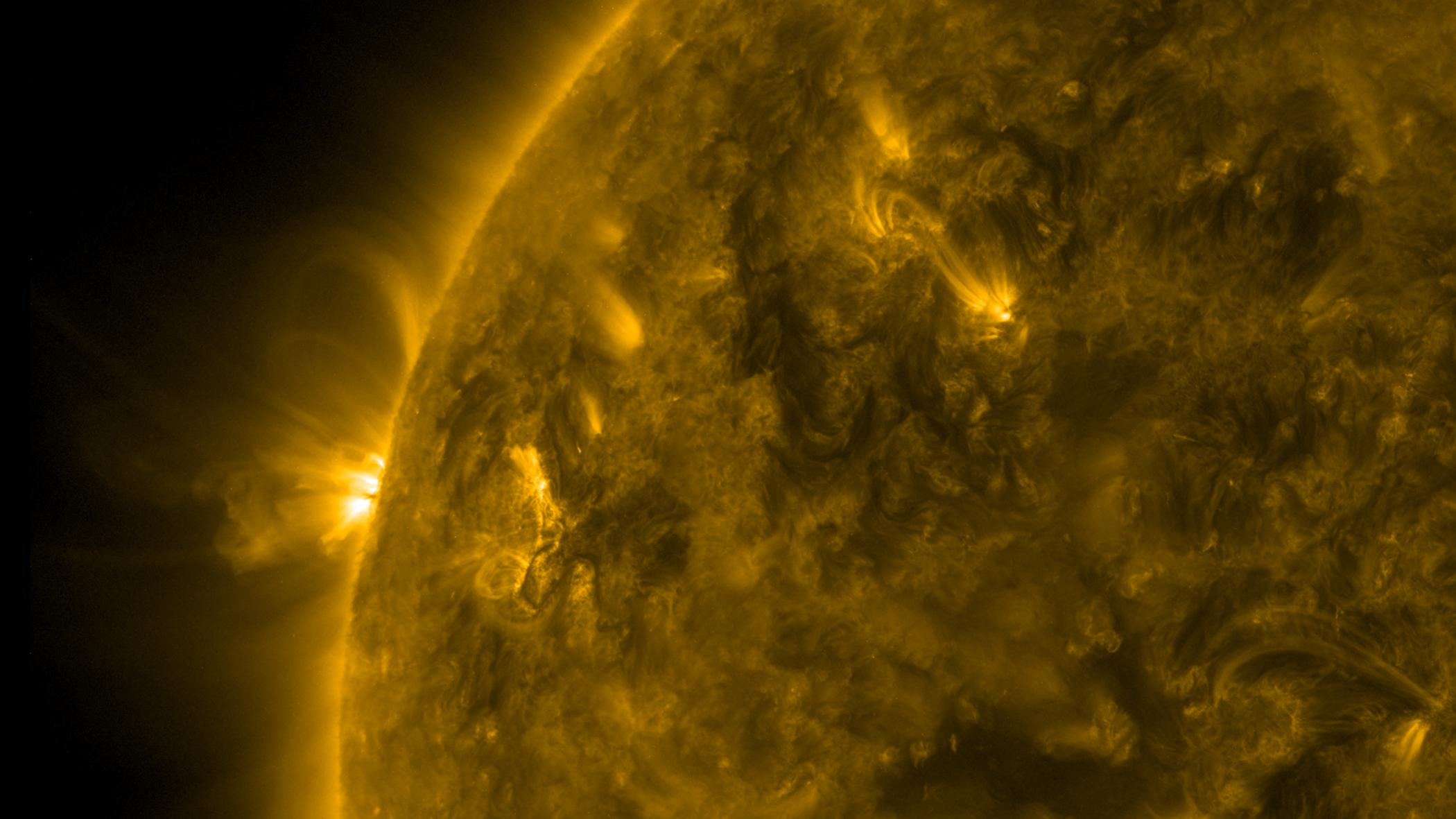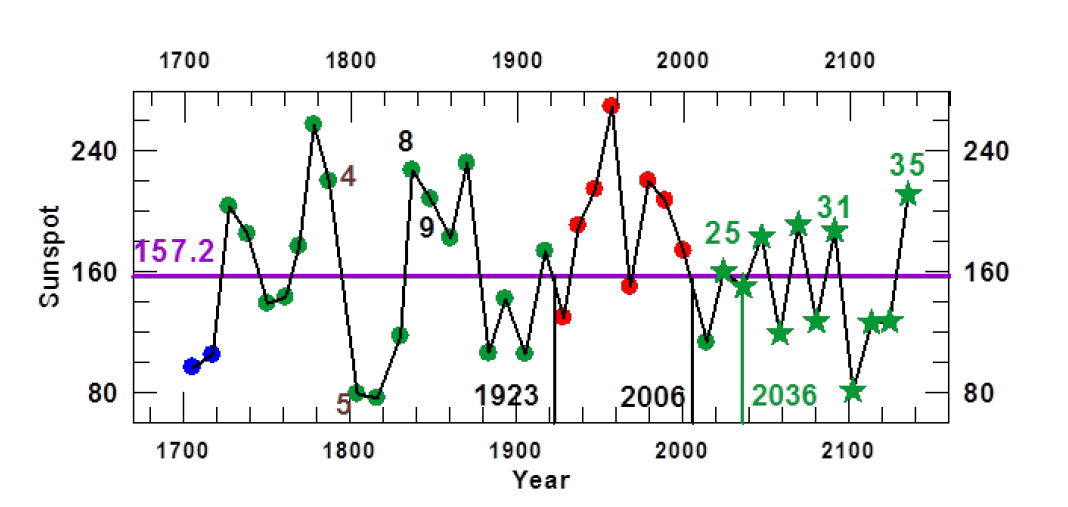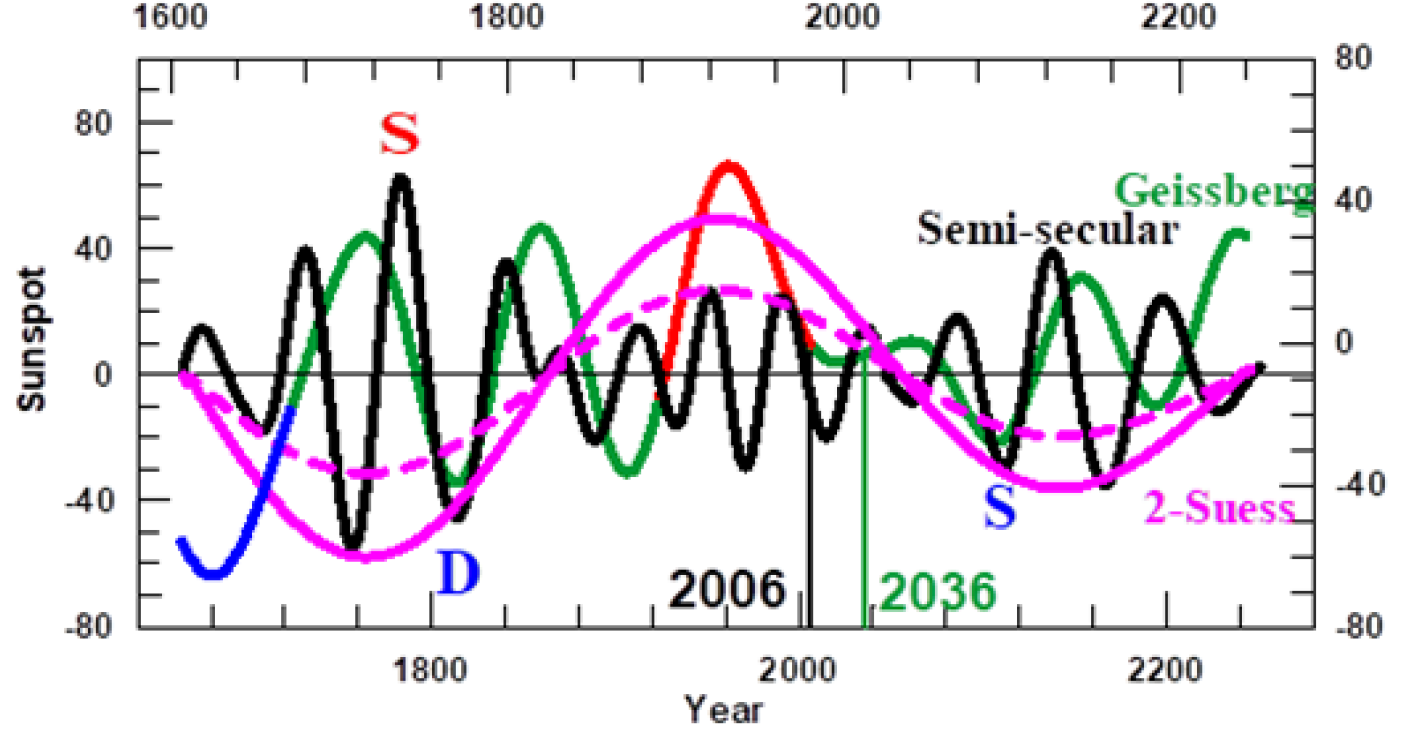(English follows Dutch)
Voormalig SRON-directeur Kees de Jager (98) voorspelt de zonnevlekcycli voor de komende eeuw. Samen met zijn collega Silvia Duhau (Universiteit van Buenos Aires) heeft hij de voorgaande cycli ontleed in hun grondtrillingen en daar acht patronen in ontdekt. Ze voorspellen bovendien de Gleissbergcycli voor de aanstaande tweehonderd jaar.

Van alle sterren in de Melkweg staat onze Zon veruit het dichtste bij de Aarde. Als je sterren zou verkleinen tot pingpongballen, dan is de Aarde een zandkorrel op vier meter afstand van de Zon. De eerstvolgende ster bevindt zich dan ruim duizend kilometer verderop, vanuit Nederlands perspectief dus ergens aan de Franse Riviera. Toch weten we zelfs over de Zon lang niet alles. De cycli waarin het aantal zonnevlekken van maxima naar minima en terug gaat, kunnen we bijvoorbeeld nog erg moeilijk doorgronden. Kees de Jager, oud-directeur van SRON en verbonden aan NIOZ, heeft nu voorspellingen gedaan over de zonnevlekcycli voor de komende eeuw en de zogenoemde Gleissbergcycli voor de aanstaande tweehonderd jaar.
De Jager heeft samen met Duhau de zonnevlekcycli uit het verleden ontleed in hun grondtrillingen en zo acht herhalende patronen ontdekt met onderlinge samenhang. Daaruit leiden ze af wanneer de zonnevlekmaxima zullen plaatsvinden in de komende eeuw en hoe hoog die zijn; zie de groene sterretjes in figuur 1. De voorspelling over de Gleissbergcyclus is weergegeven als de groen/rode lijn in figuur 2. Zonnevlekcycli, die gemiddeld elf jaar duren, doorlopen die cyclus waarbij hun maximum aantal zonnevlekken varieert en hun lengte fluctueert tussen de acht en twaalf jaar. Eén Gleissbergcyclus duurt zelf ongeveer tachtig jaar.
Als de voorspellingen van De Jager en Duhau uitkomen, hebben ze een goed model gevonden voor de zonnecycli en snappen we het mechanisme erachter dus beter. Zonnevlekken vormen de doorgangspunten voor magnetische veldlijnen om de Zon in en uit te gaan. Dus als er veel vlekken zijn, is het zonne-oppervlak flink aan het borrelen, met een hoge magnetische activiteit. Het doorgronden van de zonnecycli is daarmee essentieel voor ons begrip over de activiteit van de Zon. Bovendien helpt het bij het voorspellen van het ruimteweer, zodat we onze satellieten en elektriciteitsnetwerken beter kunnen beschermen tegen uitbarstingen van zonnewind.
Publication
Duhau S, Jager C. Solar dynamo modes of oscillations and the long-term prediction of solar activity. Phys Astron Int J. 2020;4(1):34‒58.


Kees de Jager predicts sunspot cycles for the next 100 years
Former SRON director Kees de Jager (98) predicts the sunspot cycles for the next hundred years. Together with his colleague Silvia Duhau (University of Buenos Aires) he dissected the previous cycles into their fundamental frequencies and discovered eight patterns. They also predict the Gleissberg cycles for the coming two centuries.

Of all the stars in the Milky Way, our Sun is by far the closest to Earth. If you reduce stars to the size of a ping pong ball, the Earth is a grain of sand four meters away from the Sun. The next star is then over a thousand kilometers away, from a Dutch perspective somewhere on the French Riviera. Yet we don’t even know everything about the Sun. For example, it is challenging to understand the cycles in which the number of sunspots goes from a maximum to a minimum and back. Kees de Jager, former director of SRON and affiliated to NIOZ, has now made predictions about the sunspot cycles for the next hundred years and the so-called Gleissberg cycles for the coming two centuries.
Together with Duhau, De Jager dissected the past sunspot cycles into their fundamental frequencies and discovered eight repeating patterns with mutual connections. From this they deduce when the sunspot maxima will take place in the next hundred years and how large they will be; see the green asterisks in figure 1. The prediction on the Gleissberg cycle is shown as the red/green line in figure 2. Sunspot cycles, which last on average eleven years, go through that cycle while their maximum number of sunspots varies and their period fluctuates between eight and twelve years. One Gleissberg cycle itself lasts about eighty years.
If the predictions of De Jager and Duhau come true, it means they have found a good model for the solar cycles and that we understand the mechanism behind it better. Sunspots are the transit points for magnetic field lines to enter and exit the Sun. So a large number of spots means that the solar surface is boiling with high magnetic activity. Figuring out the solar cycles is therefore vital for our understanding of the Sun’s activity. In addition it helps to predict space weather, so that we can better protect our satellites and power grids against outbursts of solar wind.
Publication
Duhau S, Jager C. Solar dynamo modes of oscillations and the long-term prediction of solar activity. Phys Astron Int J. 2020;4(1):34‒58.




